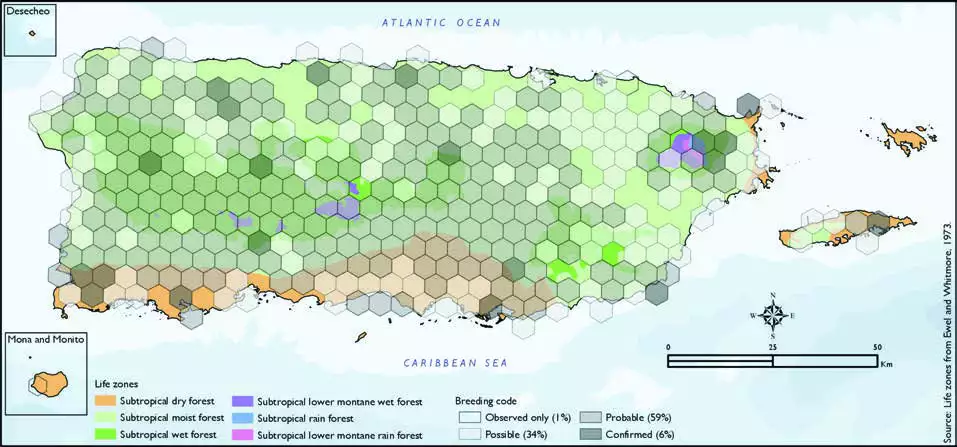Black-whiskered Vireo
Description
The black-whiskered vireo (Vireo altiloquus) is a small passerine bird, which breeds in southern Florida, USA, and the West Indies as far south as the offshore islands of Venezuela. It is a partial migrant, with northern birds wintering from the Greater Antilles to northern South America. This species has occurred as a rare vagrant to Costa Rica.
This vireo is 14–15 cm in length, has a 25 cm wingspan and weighs 17–19 g. It has thick blue-grey legs and a stout bill.
Distribution & Habitat
The Black-whiskered Vireo occurs in the Southeastern
United States, northern South
America, and throughout the
West Indies (Raffaele and
others 1998). It is a common
spring and summer resident
in Puerto Rico, very abundant
(MarchAugust) in forested or
wooded areas on the island
(Oberle 2018, Raffaele 1989a),
but uncommon in Vieques
(Gemmill 2015). It has also
been reported from Mona and
Desecheo (Ventosa-Febles and
others 2005). Most individuals
migrate to South America for
the winter, although some
individuals remain on the island during the non-breeding season.
This species inhabits forests
of all types and elevations,
woodlands, tall undergrowth,
mangroves, and gardens
(Raffaele and others 1998). The
atlas fieldwork yielded a total of
713 records within 355 hexagons
or 74 percent of the 479 total
hexagons (see map). Of the 355
hexagons where this species
was found, breeding met the
atlas definition of confirmed in
6 percent (20) of the hexagons,
probable in 59 percent (211),
and possible in 34 percent (122),
while the species was observed
in 1 percent (2) of the hexagons
but without evidence of breeding
(see map). Black-whiskered Vireo distribution. The map shows the highest breeding code by hexagon and overlaying the ecological life zones
in Puerto Rico. Note: percentages may not total 100 due to rounding. 217Black-whiskered Vireo/Julián Chiví

Breeding Habits
The Black-whiskered Vireo constructs a cup-shaped nest
made of various plant fibers and
grasses hanging from the fork of
a small branch in the canopy of a
tree from May to June, according
to previously published reports
(Raffaele and others 1998). Atlas
results show that this species
may breed primarily from March
to June, with fewer records
later in the year when most
vireos have migrated south (see
chart). Results suggest that the
Black-whiskered Vireo inhabits all forest types as it breeds
within the subtropical moist
forest life zone (59 percent of
the hexagons), subtropical wet
forest life zone (23 percent of
the hexagons), subtropical dry
forest life zone (17 percent of the
hexagons), and in one hexagon
within the subtropical rain forest
life zone (see table and map).
Conservation
The Black-whiskered Vireo population trend is unknown,
and due to its large distribution
range, it is listed as a species of least concern by the IUCN
(BirdLife International 2017).
Locally, this species is not
listed in any of the threatened
categories of PRDNER and
USFWS. In Puerto Rico, the
Black-whiskered Vireo has a
protected habitat in land of
about 13 percent or 1071 km2 of the total area covered by
the hexagons where evidence
of breeding was found for this
species (8420 km2).
Related Species
Family:
vireo